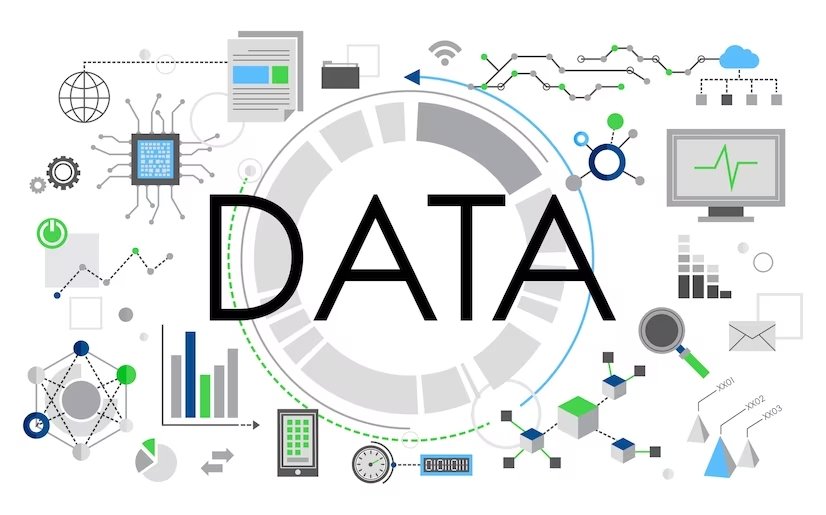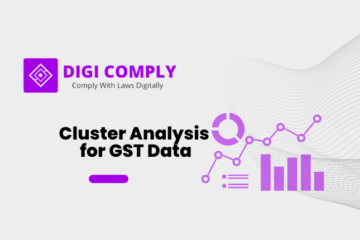A data lake refers to a centralized repository or storage system that is used to store and manage large volumes of structured and unstructured data related to e-invoices. It is a concept borrowed from the field of big data analytics.
A data lake is designed to store data in its raw form, without the need for a predefined schema or data model. It can accommodate various types of data, including e-invoice details, transactional data, tax information, and other relevant data related to GST (Goods and Services Tax) compliance.
The purpose of a data lake in GST e-invoicing is to provide a scalable and flexible storage solution for organizations to collect, store, and process large amounts of data generated during the e-invoicing process. It allows businesses to consolidate and analyze their invoice data for various purposes, such as compliance reporting, trend analysis, fraud detection, and business intelligence.
Data lakes often utilize technologies like Hadoop, distributed file systems, and cloud storage services to store and manage data efficiently. They provide a cost-effective solution for storing vast amounts of data and enable organizations to derive valuable insights from the collected information.
The Data Lake Advantage: Simplifying Data Management and Insights
A data lake serves several important purposes in modern data management and analysis. Here are some reasons why you might need a data lake:
1. Data Consolidation: Organizations generate and collect data from various sources, such as e-invoices, customer transactions, social media, sensors, and more. A data lake allows you to consolidate and store all this diverse data in one central location, regardless of its format or structure.
2. Scalability: Data lakes are designed to handle large volumes of data, including structured, semi-structured, and unstructured data. As your data grows, a data lake can easily scale to accommodate the increasing volume without significant infrastructure changes.
3. Flexibility: Unlike traditional data storage systems, a data lake doesn’t require a predefined schema or data model. You can store raw, unprocessed data in its original form, allowing for more flexibility in data exploration, analysis, and future use cases. This agility is particularly useful in situations where data requirements evolve over time.
4. Data Exploration and Discovery: A data lake provides a platform for data scientists, analysts, and business users to explore and discover new insights. With all data in one place, users can perform advanced analytics, run complex queries, and apply various data processing techniques to uncover patterns, trends, and relationships that can drive informed decision-making.
5. Data Integration and Collaboration: Data lakes facilitate the integration of data from different sources, making it easier to combine and correlate information. This integration enables cross-functional collaboration and a holistic view of the data, fostering better insights and collaboration among different teams within an organization.
6. Advanced Analytics and Machine Learning: Data lakes serve as a foundation for implementing advanced analytics techniques, such as machine learning and predictive modeling. By leveraging the rich and diverse data stored in the lake, organizations can build and train models to generate predictions, detect anomalies, automate processes, and gain a competitive edge.
7. Cost Efficiency: Data lakes often utilize scalable and cost-effective storage technologies, such as cloud storage or distributed file systems. This approach can significantly reduce infrastructure costs compared to traditional data warehousing solutions.
Overall, a data lake provides a centralized, scalable, and flexible storage environment that enables organizations to store, explore, and derive value from their data. It empowers businesses to unlock the potential of data, drive innovation, and make data-driven decisions to stay competitive in today’s data-driven landscape.
Data Lakes compared to Data Warehouses – two different approaches
Data Lakes and Data Warehouses are two different approaches to managing and analyzing data, including GST e-invoicing data. Here’s a comparison between the two in the context of GST e-invoicing:
1. Purpose and Structure:
– Data Lake: A data lake is a centralized repository that stores raw and unprocessed data from various sources, including GST e-invoices. It holds data in its original format, such as JSON or CSV files, without imposing any structure or predefined schema.
– Data Warehouse: A data warehouse is a structured, organized, and schema-based database that integrates data from multiple sources, including GST e-invoices. It follows a predefined schema and enforces data quality and consistency through an Extract, Transform, Load (ETL) process.
2. Data Storage:
– Data Lake: Data lakes store data in its native format, allowing flexibility in handling diverse data types and formats. GST e-invoicing data can be ingested into a data lake without the need for immediate transformations or schema definitions.
– Data Warehouse: Data warehouses store data in a structured manner, typically using a relational database management system (RDBMS). GST e-invoicing data needs to be transformed and mapped to the predefined schema of the data warehouse before ingestion.
3. Data Processing and Analysis:
– Data Lake: Data lakes support exploratory and ad hoc analysis of raw data. Analysts can apply various data processing techniques like filtering, aggregation, and machine learning algorithms directly on the data lake. Data lakes provide flexibility for iterative and agile analysis.
– Data Warehouse: Data warehouses are designed for structured querying and reporting. They provide optimized query performance through indexing, aggregations, and predefined data models. Analyzing GST e-invoicing data in a data warehouse involves writing SQL queries or using business intelligence tools for reporting.
4. Data Integration:
– Data Lake: Data lakes can handle a wide variety of data sources and formats. They can accommodate semi-structured and unstructured data alongside structured data, making it easier to integrate GST e-invoicing data from diverse sources.
– Data Warehouse: Data warehouses require a predefined schema and structured data to ensure data consistency. Integrating GST e-invoicing data into a data warehouse involves mapping it to the predefined schema and performing ETL processes to transform and cleanse the data.
In summary, data lakes provide a flexible and scalable approach for storing and analyzing GST e-invoicing data in its raw form, allowing for exploratory analysis. Data warehouses, on the other hand, offer a structured and optimized environment for querying and reporting on structured GST e-invoicing data, with predefined schemas and data models. The choice between the two approaches depends on the specific requirements of the analysis and the organization’s data strategy.
Key Components of a Data Lake and Analytics Solution
An effective Data Lake and Analytics solution typically includes several essential elements that work together to enable data ingestion, storage, processing, and analysis. These elements ensure that the solution can handle diverse data types, support efficient data management, and facilitate insightful analytics. Here are the key components:
1. Data Ingestion: This component involves the collection and ingestion of data from various sources into the Data Lake. It includes processes for data extraction, transformation, and loading (ETL) or data ingestion pipelines. These pipelines may involve real-time streaming or batch-processing mechanisms to ingest data in a timely and efficient manner.
2. Data Storage: The Data Lake requires a scalable and robust storage system that can handle large volumes of data. It should accommodate different data formats, including structured, semi-structured, and unstructured data. Common storage options include distributed file systems like Hadoop Distributed File System (HDFS) or cloud-based storage services like Amazon S3 or Azure Blob Storage.
3. Data Organization and Metadata Management: To enable efficient data discovery and analysis, a Data Lake solution should incorporate mechanisms for organizing and managing data. This includes the use of metadata, which provides descriptive information about the data, such as its source, structure, and meaning. Metadata management tools or metadata catalogs can help users understand and locate relevant data within the Data Lake.
4. Data Processing and Transformation: Data processing capabilities are essential for preparing and transforming raw data into a suitable format for analysis. This may involve data cleaning, normalization, enrichment, and aggregation operations. Technologies like Apache Spark, Apache Hive, or cloud-based data processing services can be used for scalable and efficient data processing within the Data Lake.
5. Data Governance and Security: Data governance ensures that the Data Lake solution adheres to regulatory compliance, data privacy, and security requirements. It involves defining data access controls, implementing data masking or encryption techniques, monitoring data usage, and establishing policies for data retention and deletion.
6. Analytics and Visualization: The Data Lake should provide tools and frameworks to enable data exploration, analysis, and visualization. This includes integration with analytics platforms like Apache Hadoop, Apache Spark, or cloud-based analytics services. Data scientists and analysts can leverage these tools to derive insights, build models, and generate reports or visualizations based on the data stored in the Data Lake.
7. Data Catalog and Search: A searchable data catalog allows users to easily discover and access relevant data within the Data Lake. It provides a centralized inventory of available data assets, along with their associated metadata. Users can search, browse, and query the catalog to find specific datasets, improving data discoverability and accessibility.
8. Data Lifecycle Management: Effective Data Lake solutions include mechanisms for data lifecycle management. This involves defining policies and procedures for data retention, archiving, and deletion based on business and regulatory requirements.
By incorporating these essential elements, a Data Lake and Analytics solution can provide a robust foundation for storing, managing, processing, and analyzing diverse data sources, enabling organizations to derive valuable insights and make data-driven decisions.
If You have any queries then connect with us at support@legalsuvidha.com or info@digicomply.in & contact us & stay updated with our latest blogs & articles





